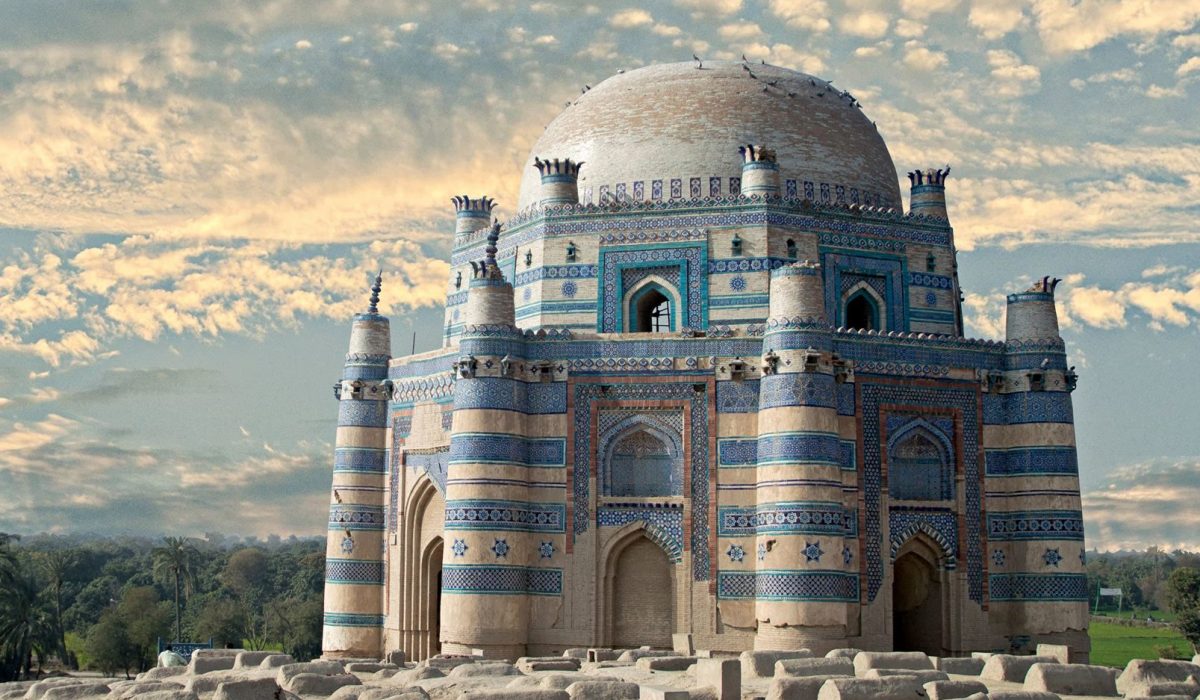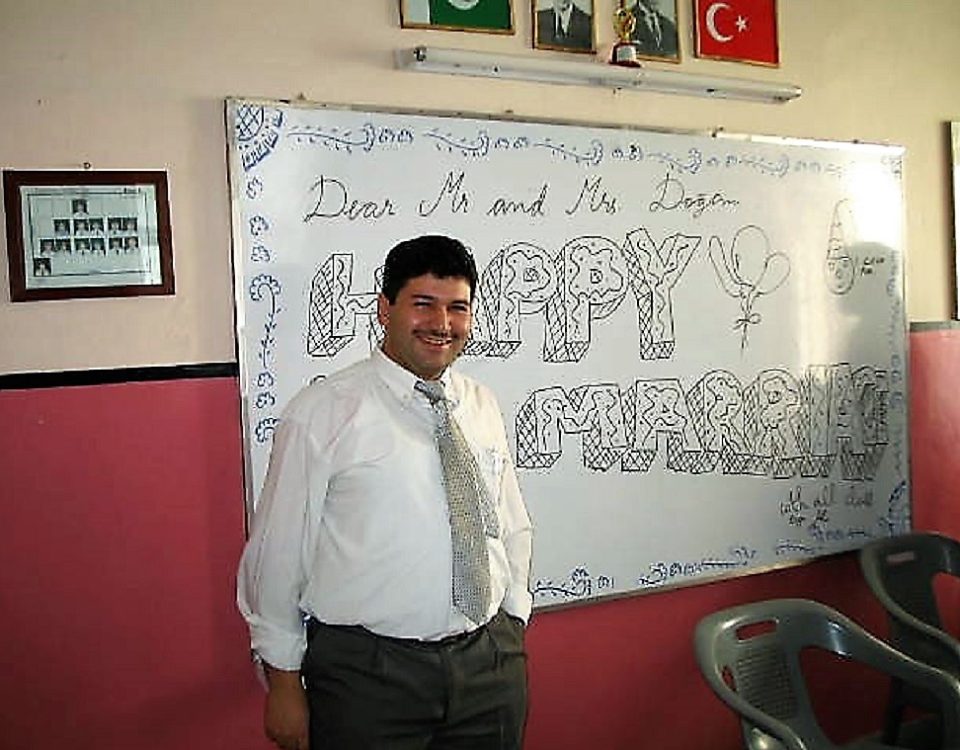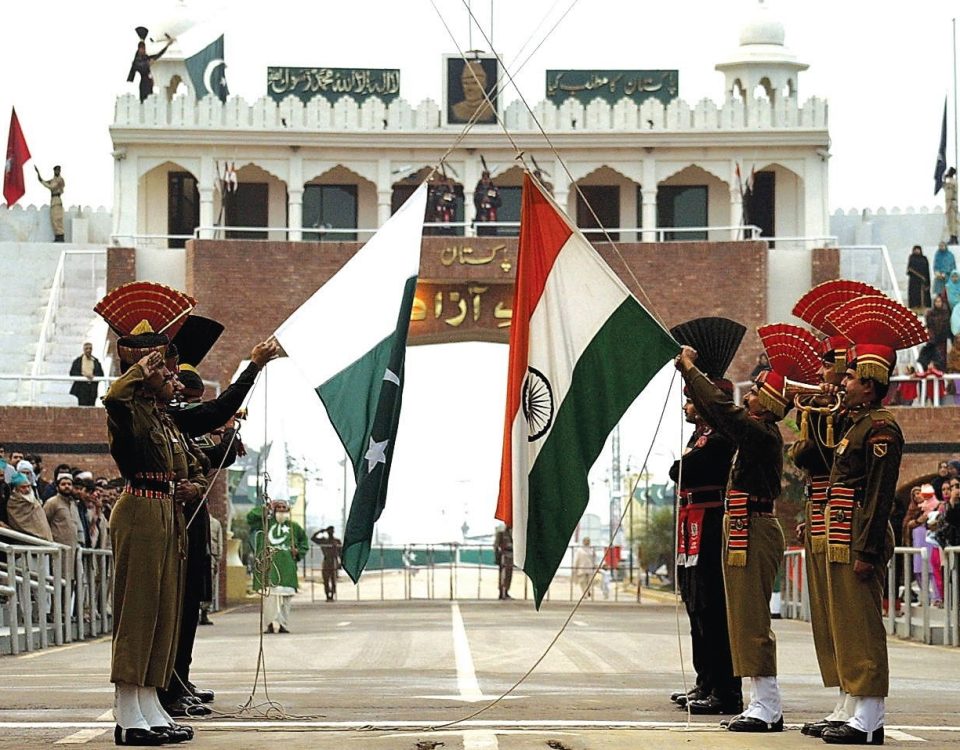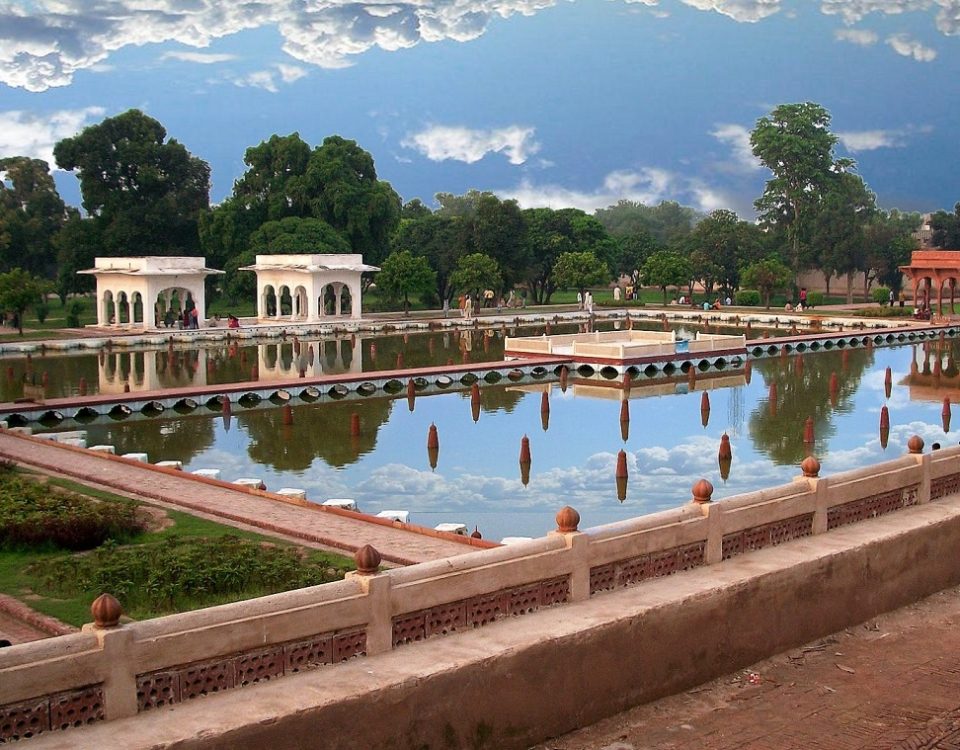Uch Sharif: A Turkish-Islamic city by its name and history

How the Federal Education Minister praised PakTurk students on a UN function
February 1, 2021
‘Despite challenges and nuances, we loved there a lot’
February 3, 2021A city thousands of kilometres away from Anatolia, Uch Sharif is exclusively peculiar with its cultural and religious motifs. Researcher Doğan Yücel wrote about the relationship between the Turks and this city in Pakistan, together with its centuries-old history and its present condition.
Before and after the advent of Islam, Turks launched multiple campaigns to India on various occasions. Turks’ relationship with India throughout the known history dates back to approximately 2500 years. (Sabir, 1963). With Turks’ admission to Islam in the 10th Century AD, the primary purpose of these campaigns changed into the notion of conquest. Between the 10th and 19th centuries, India’s north-western Punjab region was ruled by Turkish-Islamic rulers almost in an uninterrupted manner for 900 years. (Mughul, 1980, III). In the wake of their rule across India, Turkic states left numerous monuments of religious, historical and cultural heritage such the Badshahi Masjid, Taj Mahal and Qutub Minar. What’s more, as a result of the interaction between Turkish and a branch of Punjabi, a lingua franca named Urdu came into being (Asrar, 2003; Bayur, 1987). Urdu is the world’s third largest-spoken language (en.wikipedia.org).
In some places fell under their conquest, Turks founded new cities and mostly named them after Turkish expressions. ‘Uch Sharif’ is an example to this. The use of numbers in Turkish place names – such as Beşyüzevler (Five Hundred Houses), Üçyüzevler (Three Hundred Houses), Kırklareli (The Land of the Forty Saints), Kırkgöze (The Forty Springs), and Kırkpınar (The Forty Fountains) etc. – is common. Names containing numbers were also given to the graves or places where the saintly people of religion lived: Yedi Uyurlar (The Seven Sleepers of the Cave), Yediler (The Seven Saints), Kırk Kilise (The Forty Churches), Papaz Çayırı (The Pastor’s Pasture) etc. Deliberations held on the origin of the name ‘Uch Sharif’ indicate the Arabic ‘اوج’ (auj), Sanskrit ‘उचा’ (ucha) and Turkish ‘üç’ (uch) as the likely words. The point that the name of city was derived not from an Arabic composition but a Turkish composition ending in ‘ç’ (ch) sound indicates the accuracy of the second option. Turks also named other places across India with Turkish compositions, such as Taj Mahal and Lal Qila. In addition to this, as will be mentioned below, the existence of the graves of three saintly persons in this city confirms the Turkish origin of the name.
An important tourism and pilgrimage hub
Uch was previously located 84 kilometres away from Bahawalpur, at a junction where the River Indus met the River Chenab. However, due to the riverbed variation in time, it slipped 40 kilometres away to today’s Mithankot. The city now spans a vast and fertile alluvial plain used for agriculture in the southern banks of the River Chenab. To the southeast are the vast stretches of the Cholistan. According to British military officer and archaeologist Alexander Cunningham, Uch might have been founded first by Alexander the Great in 325 BC as the city of Alexandria at the junction where the River Ases met the River Indus. The ancient city of Uch was probably abandoned around 77 AD. Despite its small size, Uch is an important hub of tourism and pilgrimage thanks to numerous graves and shrines.
Uch was conquered by Muhammad ibn Qasim in 712 AD. There is not much information about the three-centuries period following ibn Qasim’s conquest. Probably, Uch was indeed the city named Bhatia reportedly conquered by Mahmud of Ghazni in 1006. In a couple of centuries and from 1094 onwards, Uch was transformed into a hub for the Shi’ite Nizaris. Presently, there are numerous recognised graves belonging to the Shi’ite Nizari and Musta’li Ismailis in and around the city.
The power struggle between two Turkish rulers
During the Middle Ages, the region around Uch and Multan remained a pilgrimage hub for the Hindu Vaishnavas and Suryas. In later years, with the orders of esteemed Muhammad Bahauddin Zakariya (may his secret be sanctified), the city started taking shape near Multan and was transformed into the centre of the Suhrawardy Sufi school of thought by the beginning of 1200s. Uch was conquered by Muhammad Ghauri in 1175. In 1204, Qabacha was appointed as the Governor of Uch, and Uch became the central city in the Upper Sindh region. Before setting off to conquer Lahore after the death of Sultan Aibak in 1211, Qabacha had declared the independence of his principality including the important cities of Uch and Multan. In due course, Sultan Qabacha entered his budding Sultanate of Uch to a war against Sultan Iltutmish of the Delhi Sultanate. Even though he could hold on to control the city for some additional time, Qabacha eventually lost Uch to another Turkish ruler named Taj al-Din Yildiz.
The power struggle between the two Turkish rulers named Qabacha and Sultan Iltutmish caused a strong burden on Uch more than suffered by Samarkand – as the seat of the defeated Khwarazmian dynasty – in the hands of the Mongol armies led by Chinggis Khan. After his father’s defeat by the Mongols in mid-1210s, the last Khwarazmian Sultan Jalal al-Din Mingburnu conquered Uch in 1224 after Sultan Qabacha’s refusal for assisting Mingburnu in a battle against Chinggis Khan. Sultan Qabacha managed to defend Multan successfully. Having been weakened by the Mongol and Khwarazmian raids, Sultan Qabacha’s forces lost Uch to Sultan Iltutmish of the Delhi Sultanate in 1228. One of the most prominent saints of Uch, Jalaluddin Surkh-Posh Bukhari migrated from Bukhara to Uch in 1244-45. Led by Möngke Khan and assisted by the local Hohar tribes, Mongol armies invaded Uch once again in 1245-46. In 1252, some forces were dispatched from Delhi to protect Uch against Mongol raiders. Following the last Mongol invasion in 1305, Uch entered under the rule of Ghazi Baig Governorate led by Ghias al-Din Tughlaq – known as Ghazi Baig – who would later conquer Delhi and found the Tughlaq Dynasty. Uch was conquered in 1398 by Pir Muhammad ibn Jahangir, a grandson of Timur.
A hub for the Qadri Sufis
By mid-1400s, Muhammad Ghaus – a descendant of Abdul Qadir al-Gilani (may his secret be sanctified), founded a khanqa (Sufi lodge) in Uch and the city started transforming into a hub of the Qadri Sufi school of thought which would eventually become the dominant Sufi streak in the Punjab province.
It is believed that Guru Nanak, the founder of Sikhism, visited Uch by the beginning of 1500s and, after meeting the grandchildren of Jalaluddin Surkh-Posh Bukhari, left five handwritten souvenirs there.
During the reign of Akbar, the city became a part of the Mughal Empire as a district of the Multan province. Under the Mughal rule, the city continued developing as a hub of religious education. In 1680, the acclaimed Punjabi poet Bulleh Shah, deemed as a saint by the Sufi Muslims and the Sikhs, was born in Uch.
After the collapse of the Durrani Empire, Uch subjected to the rule of the principality of Bahawalpur which had declared its independence in 1748. Bahawalpur later became a part of the British Raj as a result of an 1833 agreement. In 1836, the ruling Abbasi dynasty rejected paying protection money to the Sikhs and declared independence. The Abbasi Dynasty in Bahawalpur also chose the British side during the British-Sikh War and thus managed to remain an independent princely state. When Pakistan declared its independence in 1947, Uch had an estimated population of 3.000. As a part of the Bahawalpur princely state, Uch was admitted to the newly-founded Pakistan; however, the city was ultimately united with Pakistan in 1955.
A city texture woven with tombs
Uch could protect its historical city texture as intact almost completely. The historical city is divided into three regions: Uch Bukhari for the saints who hailed from Bukhara, Uch Gilani for the saints who hailed from Iran, and Uch Mughalia as a tribute to the Mongol raiders’ grandchildren who settled there. Historical artefacts are scattered across the city which teems with interconnected narrow lanes and street markets. As the most significant quarter, the Uch Monument Complex is located in the western side of the Old City. The Old Downtown is located near a vast area used as a gathering ground for commemorating the Sufi greats of the city or a meeting place for the visiting Sufis.
The tomb with 17-tiles and its annexes are tightly woven into the Uch city texture. The tombs, especially the ones of Sayyid Jalaluddin Surkh-Posh Bukhari and his family, were built in a local Southern Punjab architectural style with the decorative tiles brought from nearby Multan. As an element of the typical Tughlaq military architecture, these domed tomb structures rise on 8-pillar pedestals with decorative ramparts and embrasures.
Built within 200 years, the Uch Monument Complex with its three tombs and the 1400 annexed graves were inducted in the UNESCO World Heritage Tentative List as prominently significant works of art. The tombs were built for Shaikh Baha’al-Halim, his granddaughter Bibi Jawindi and Jalaluddin Surkh-Posh Bukhari respectively.
‘A gifted child of Islam’
The flood in the early 19th century caused serious damage, such as destruction and deterioration of walls and surfaces, to many of the city’s tombs. The Three Monuments Complex was tentatively inducted to the lists of the World Monuments Fund in 1998 and the World Monuments Watch Organization in 2000 and 2002. Currently, the upkeep of the monuments and the tombs are supervised by the UNESCO.
We need to heed more and show due concern about our common historical and cultural legacy in the Subcontinent comprising India and Pakistan which was termed as “a gifted child of Islam” (Said Nursi, Tarihçe-i Hayat, pp.79). There are numerous works on the historical artefacts in Uch; yet, there is no Turkish source among these. The builders of the historical structures of this small city, which is immensely precious in terms of our history of politics, religion, and the arts, look forward in their graves to receiving both scientific and substantial concern from their descendants.
References:
Mughul, M. Y. (1980). Geleneksel Yönleri İle Türkiye, Pakistan ve İran’da Kullanılagelen Yaygın Kelimeler. Ankara: TTK Basımevi.
Sabir, M. (1963). Urdu Mey Turkî Or Mongolî Elfaz. Urdunama Karachi,13, 7-26.
Asrar, N. A. (2003). Pakistan İle Türkiye Arasındaki Dil Ve Edebiyat İlişkileri. TDK Türk Dili Ve Edebiyatı Dergisi, 622, 464-466.
Bayur, Y. H. (1987). Hindistan Tarihi. 3 Cilt. (2.Baskı) Ankara: TTK Basımevi.
Bediüzzaman Said Nursi (1996). Risale-i Nur Müellifi Bediüzzaman Said Nursi Tarihçe-i Hayatı. İstanbul: Envar Neşriyat.
https://www.webcitation.org/6RIcTxNwv (Retrieved on 15.05.2020)
whc.unesco.org/en/tentativelists/1883/ (Retrieved on 15.05.2020)





No Comment.